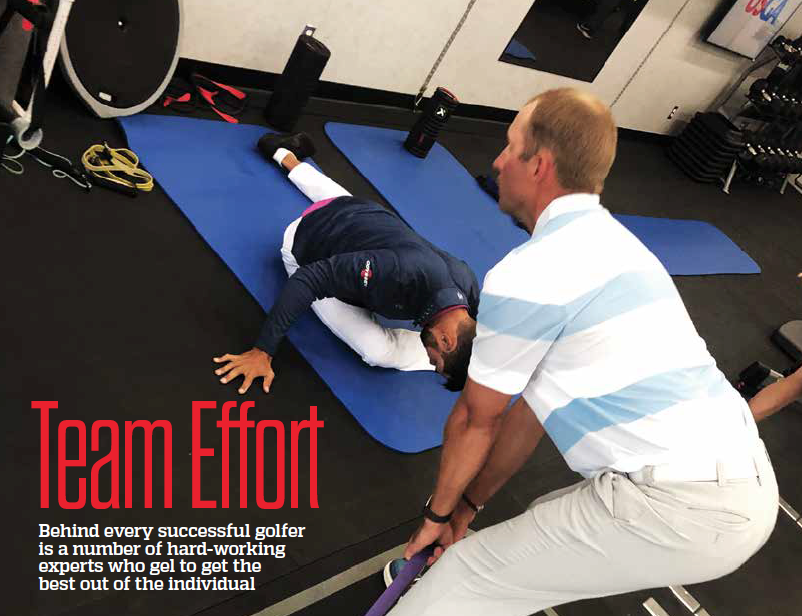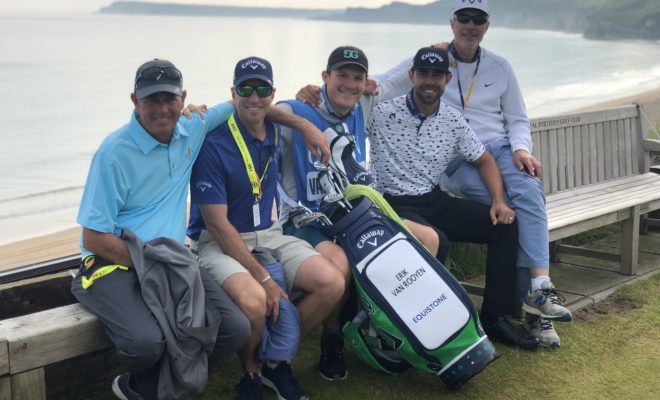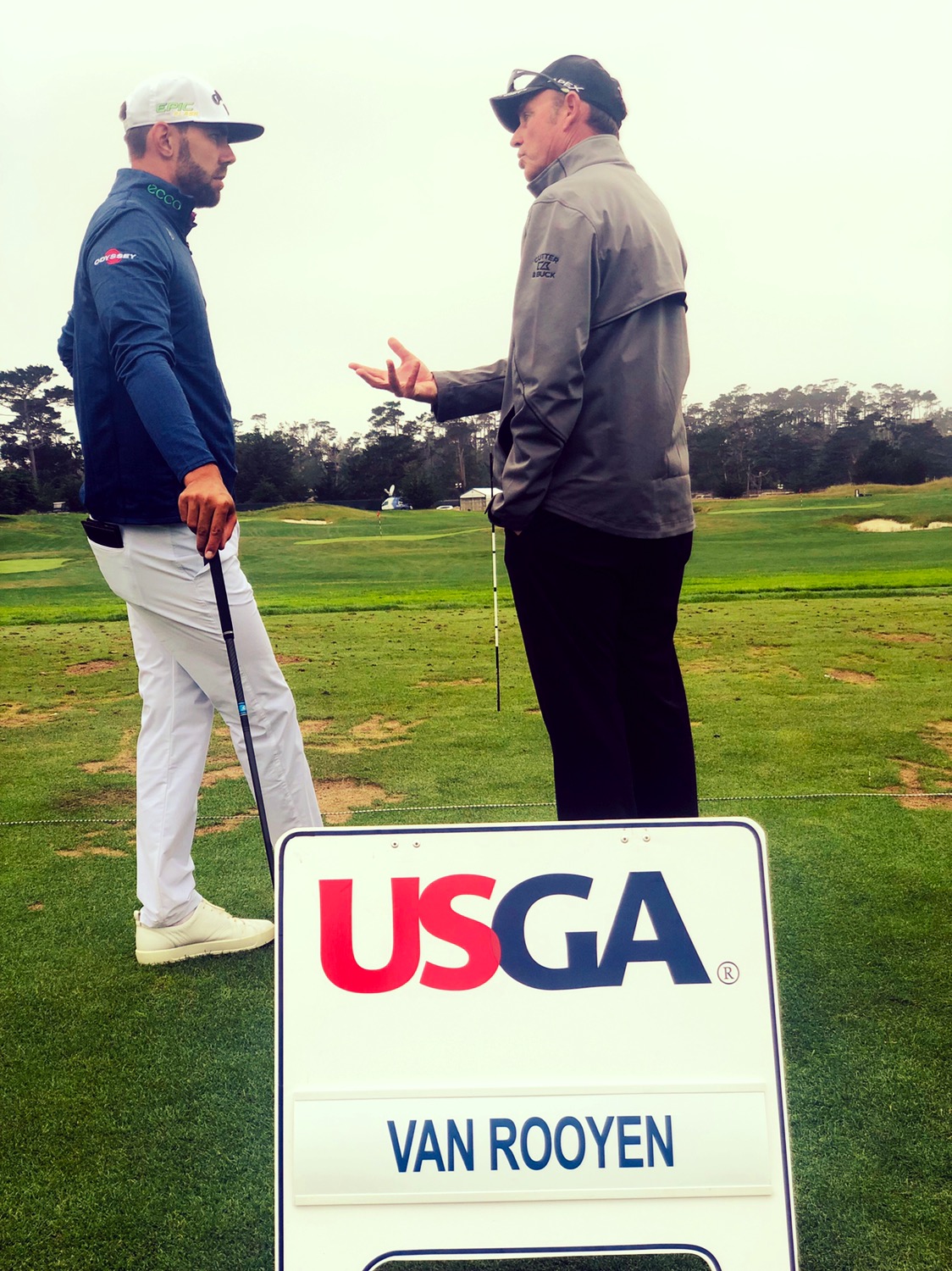Behind every successful golfer is a number of hard-working experts who gel to get the best out of the individual, writes GARTH MILNE in Compleat Golfer.
With every large pay cheque earned by a golfer on the big Tours, the media have a field day with the figures. Casual golf fans might presume that the pro golfers earn these large sums for a mere four days of work, but unknown to many is that behind every player there is a team that enables them to get to where they are.
This team approach is essential for an athlete to perform in what many perceive to be an individual sport. Having a strong group of experts who trust each other and have the golfer’s best interests at heart is what makes them a world-class performer.
The caddie/player relationship is the most obvious one as it’s what we see on the course. Erik van Rooyen acknowledged this after his recent win at the Scandinavian Invitation, praising his wingman, Alex Gaugert.
Then there is, of course, the golf instructor. Many players have more than one coach or instructor. Players and coaches spend hours on the range and practice areas in weeks off, and days on Tour can be extremely long for a coach who may have more than one player competing at an event. Practice days involve many hours of on-course preparation, game-plan analysis and sessions on the range, honing the shots needed to compete that week.
Some players also have a mental coach to work on the most important distance in golf – the six inches between the ears.
A golfer’s mindset influences their approach to their sport and how they frame their results. Mental strength and focus is imperative for golfing performance, but it’s finding a balance of intensity and being able to accept the outcome that is crucial. Some travel with their players, others are a phone call away.
Then there is the physical side. When watching professional golfers, many spectators comment on how easy they make it look. Professionals are able to combine power and finesse into their golf swings. How do they do it? A key component to their success is their ability to move each part of the body through the required range of motion while simultaneously maintaining kinetic balance, stability and power. When one of these skills is limited, a golfer’s efficiency
in transferring energy is diminished. The golf swing suffers, the mechanics are altered and injuries occur.
For this reason many professionals have medical and/or fitness experts who travel with them. Each of these practitioners puts time and effort into ensuring the golfer’s body is functioning optimally. This includes daily sessions in the gym working on their golf-specific fitness during tournament weeks, regular treatment sessions and aggressive off-week fitness regimes. Tour players include various forms of fitness in their routines: mobility exercises like those found in yoga, stability training for the core and rotator cuff, balance and proprioception exercises, strength training and power movements. They use exercise equipment such as elastic tubing and cables, medicine balls, stability balls, traditional weights, cardiovascular equipment and kettlebells. Some of the most effective exercises, however, require only body weight.
It’s important to use more than one type of training methodology in a golf fitness programme to ensure a constant and progressive challenge to the golfer’s body. In many aspects of life, people tend to practise what they are good at and ignore what they find challenging or difficult. Often decent ball strikers spend the majority of their practice time beating balls on the range and almost completely ignore their short-game routines. The same occurs in the gym. People work on their strengths and ignore their weaknesses. This leads to minimal carryover of the gains attained in the gym on to the golf course. The end result is frustration and a lot of wasted time.
Having a team of medical and fitness professionals who advise, guide and treat
a golfer is essential for success. During a tournament week each player will see a physiotherapist or chiropractor before their practice sessions. Players get a functional assessment, including muscle testing and motion testing, which is followed up with hands-on treatment and a dynamic warm-up. Then again later for a post-practice cool down/flushing session where more movement testing will be done. Movement screening is used to find imbalances.
On tournament days, players will run through a mobility, stability and movement activation warm-up. After their rounds they will see their physiotherapist or chiropractor for another flushing session. As such, a physiotherapist or trainer who works on Tour endures long days at the course in support of their players’ needs.
The African proverb says it takes a village to raise a child, but it also takes a team to guide a golfer to realise their true potential.
ABOUT GARTH
Garth Milne is a golf fitness specialist who trains a number of professionals on the world’s pro Tours and emerging amateur players. He dedicates a lot of time to junior academies across South Africa, but is primarily based at the Serengeti Golf Academy, where he and PGA pro Doug Wood run their Wanna Be A Champion programme. For more information, visit wannabeachampion.com. Twitter: @SmileyMilne










